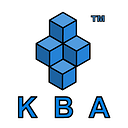Polkadot: The Connecting Dots of Blockchain
By Anju B Nair, Technical Content Writer Kerala Blockchain Academy
Polkadot is one of the several competing blockchains that aims to grow an ecosystem of its own. Launched in 2020, Polkadot is among the newest, that trends for enumerable reasons. The latest fad introduces many novel technical features that suffice current blockchain challenges including scalability and low throughput. All thanks to Gavin Wood ( Co-Founder of Ethereum) who proposed Polkadot alongside the other co-founders’ Peter Czaban and Robert Habermeier.
If one delves into the history of Polkadot, the idea generation of the blockchain network came in, when Wood and Team were busy nurturing Ethereum 2.0. Conceived as a scaling solution for blockchains like Ethereum, Polkadot soon transfigured into a service blockchain enabling multiple blockchains to connect and mushroom under one unified network. It enables a global network of computers to operate a blockchain on top of which users can operate their own blockchain. More on, it incentivizes those computers for their act of launching and operating their blockchain. Continue reading for a detailed impression of Polkadot and how it brought a newer set of perspectives on blockchain technology.
As a one-liner explanation, Polkadot is a kind of software designed for combining a whole network of purpose-specific blockchains.
The design philosophy foresees the advantages like seamless operations of several blockchains together, opening an egress of various real-world use cases. Most important of all, Polkadot anticipates combining the best functionalities of different blockchains for creating new opportunities in decentralized marketplaces. The Polkadot network simply connects heterogeneous blockchains. And, its flexible and adaptive architecture invites curating multiple technologies, including smart contract platforms. Isn’t it interesting???
Architectural Philosophy
If one looks at the architecture of Polkadot, at a high level, it resembles that of sharding designs proposed for Ethereum 2.0. Both designs are capable of running several chains in parallel executing transactions. When it comes to Polkadot, it scales via multiple, parallelizable chains, called parachains, in other words, different blockchain networks. You’ll see parachains in detail in the coming blog.
The Parachains allow independent transactions on different parachains to be executed in parallel, thus, increasing transaction throughput. Also, parachains stay flexible for customization for any number of uses, simply expanding the functional capacity of that parachain (blockchain). Polkadot believes in the act of optimizing the chain for particular use cases than following the one-size-fits-all greet. It in addition welcomes the support of additional chains for more customization, with a better scope for innovation in blockchain. In the early blockchains, like that of Bitcoin, this was quite hard to crack as they often cocooned to their functional end.
What’s special about Polkadot?
Collaborative Design: The early blockchains like Bitcoin and Ethereum, functioned like walled cities. They did not have access to other networks. However, Polkadot introduced a new phenomenon of cross-chain communication and interoperability. It simply enabled seamless exchanging of values and sharing functionalities within blockchains.
Heterogeneous Sharding: Polkadot connects different chains under a roof. It allows these chains to process transactions simultaneously with each other. Also, offers a platform for flexible exchanging of data between chains with the assurance of security.
Scalability: The ecosystem ensures parallel processing of multiple transactions. Thus removing the bottlenecks that were evident on conventional networks which carried out transactions one after the other. All thanks to the relay chains, a feature in Polkadot that aids in increasing the number of shards. You’ll read on relay chains in our upcoming blog on Polkadot.
Forkless Upgrades: To upgrade, Polkadots do not demand blockchains to fork the chain. The transparent on-chain governance system of Polkadot helps in implementing the upgrades.
As the bottom line we could say Polkadot is next-generation blockchain technology, that promises a new way of using blockchain networks. It is capable of getting the best of every blockchain via its collaborative design architecture. Maybe in the future, we could see Polkadot giving a true definition of decentralization in the use of blockchain, not limiting the power within the network.
Stay tuned to us for the detailed technical impression of Polkadot and its architecture in the next blog.
